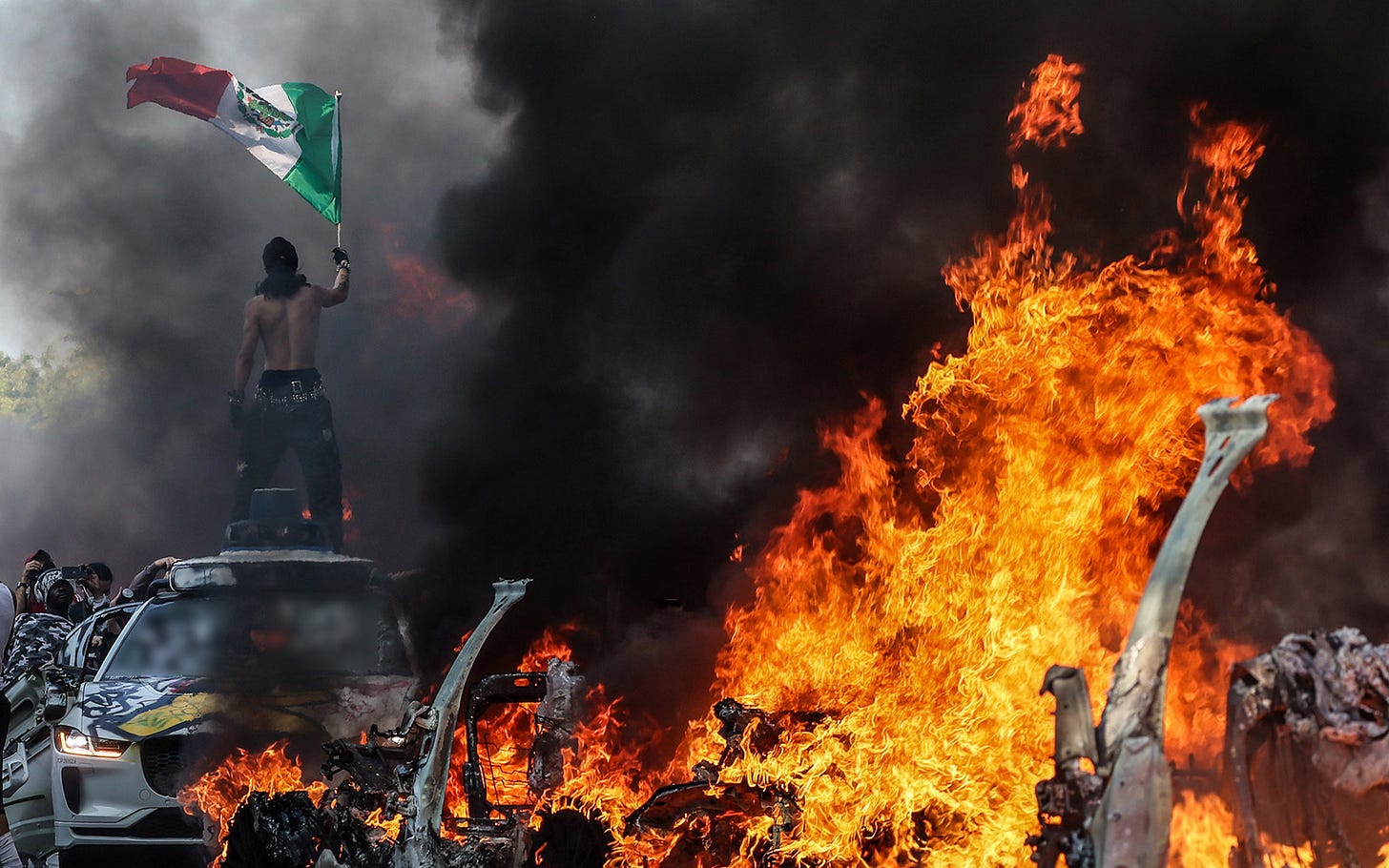As our "cold" civil war heats up . . .
We ignore Dr. Martin Luther King Jr.'s wisdom at our peril
The photos below, taken when protests against ICE in Los Angeles escalated into violence, will now form the backdrop for Trump’s military parade in Washington DC this Saturday, June 14th.
Any ill-ease some agnostic or even Trump leaning voters might have felt watching hundreds of military tanks roll down the streets of DC, or seeing National Guardsmen take up arms against protesters, will likely be diluted by those whose violence helps to justify his basest, most militaristic responses.
The question is not whether or not protests are an effective form of resistance, but what kinds of protests stand the best chance of building a coalition broad enough, not just to resist Trump, but to save our democracy and rebuild it on firmer ground.
The irresistible power of nonviolent protest
No one has thought more deeply or systematically about the role of nonviolent protest than Dr. Martin Luther King, Jr., as illustrated best in “The Social Organization of Nonviolence.”
In 1959, King wrote that article to address a troubling fissure emerging among those fighting for the rights and freedom of Black people. On one side were those engaging in violence out of rage and/or to inflict as much damage as possible on those in power. On the other side were those engaged in disciplined, organized nonviolent resistance to build a coalition broad enough to wrest power from their hands.
Now that this cold civil war of ours is threatening to boil over into a hot one this week, what Dr. King said sixty-six years ago has never been more relevant or more important for all of us to understand. For that reason, I excerpt his article at length below and encourage all of you to read it in its entirety.
Why violence will always fail1
[Its] greatest danger is that it will fail to attract Negroes to a real collective struggle, and will confuse the large uncommitted middle group, which as yet has not supported either side.
Further, it will mislead Negroes into the belief that this is the only path and place them as a minority in a position where they confront a far larger adversary than it is possible to defeat in this form of combat.
When violence is and is not effective and warranted
When the Negro uses force in self-defense he does not forfeit support—he may even win it, by the courage and self-respect it reflects. When he seeks to initiate violence he provokes questions about the necessity for it, and inevitably is blamed for its consequences.
The false choice: cringing submissiveness or taking up arms
In the history of the movement for racial advancement, many creative forms have been developed—the mass boycott, sitdown protests and strikes, sit-ins,—refusal to pay fines and bail for unjust arrests—mass marches—mass meetings—prayer pilgrimages, etc. . . . When the police incarcerated a Negro doctor unjustly, the aroused people of Monroe [North Carolina] marched to the police station, crowded into its halls and corridors, and refused to leave until their colleague was released. Unable to arrest everyone, the authorities released the doctor and neither side attempted to unleash violence.
Organized masses on the march are more powerful than desperate individuals
There is more power in socially organized masses on the march than there is in guns in the hands of a few desperate men. Our enemies would prefer to deal with a small armed group rather than with a huge, unarmed but resolute mass of people.
Not all mass resistance is equal
[It] is necessary that the mass-action method be persistent and unyielding. Gandhi said the Indian people must “never let them rest,” referring to the British. He urged them to keep protesting daily and weekly, in a variety of ways. This method inspired and organized the Indian masses and disorganized and demobilized the British. It educates its myriad participants, socially and morally. All history teaches us that like a turbulent ocean beating great cliffs into fragments of rock, the determined movement of people incessantly demanding their rights always disintegrates the old order.
Above all, we must stick together
Our present urgent necessity is to cease our internal fighting and to turn outward to the enemy, using every form of mass action yet known—create new forms—and resolve never to let them rest. This is the social lever which will force open the door to freedom. Our powerful weapons are the voices, the feet, and the bodies of dedicated, united people, moving without rest toward a just goal. Greater tyrants than Southern segregationists have been subdued and defeated by this form of struggle. We have not yet used it, and it would be tragic if we spurn it because we have failed to perceive its dynamic strength and power.
According to Erica Chenoweth’s now well-known longitudinal research, nonviolent protests are twice as likely to succeed as armed conflicts – and those that engage 3.5% of the population have never failed to bring about change.2
This is no time to indulge in resentments and hatreds. The stakes are too high. Let us stop obsessing about why those who voted for Trump still support Trump or hope that they will abandon him some day when the evidence mounts that they have been played. They have their reasons, and they shall not abandon them no matter what Trump does. They will only double down to dampen whatever cognitive dissonance they may feel.
Let us focus 100% of our attention on building a coalition of the willing, one broad enough to defeat tyranny, hatred, and violence.
And let everyone in that coalition discourage violence and embrace organized nonviolent resistance every day, no matter how small that resistance might be.
Though Dr. King’s language is outdated, his ideas are timeless. Please do not allow the old terminology distract you.
See David Robson, BBC https://www.bbc.com/future/article/20190513-it-only-takes-35-of-people-to-change-the-world






